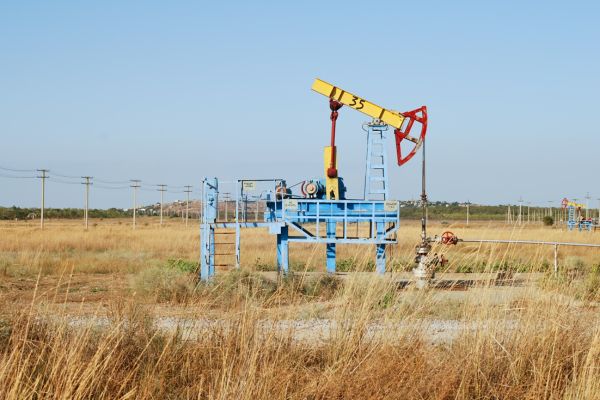Primary oil recovery methods allow oil and gas companies to receive about 10% of a reservoir’s oil. In other words, initial recovery leaves about 90% of the oil untouched. To address this significant issue, companies use secondary oil recovery methods to increase production rates. Unfortunately, traditional primary and secondary oil recovery techniques still aren’t nearly as effective as they need to be, with a combined average recovery rate of 40% or less.
A better solution is needed to increase oil production rates and profits per well for gas companies. More effective recovery rates are also better for the environment, the economy and more.
Thankfully, that better solution already exists. Nanobubbles are a revolutionary technology that can significantly increase oil recovery rates safely, effectively and profitably.
What is Primary Oil Recovery?
Before understanding secondary techniques, you need to understand primary oil recovery. Primary techniques generally rely on oil production resulting from pressure depletion. As oil is withdrawn, the reservoir’s pressure begins to decline. Sometimes, this process uses pressure support from an aquifer.
Once a well is drilled from the surface to an underground reserve, gravity and pressure direct oil into the wellbore. From here, a pumpjack brings the oil to the surface for as long as the pressure inside allows it. Once there’s no longer enough pressure, companies resort to secondary oil recovery methods.

What Is Secondary Oil Recovery?
Secondary oil recovery aims to increase production beyond what naturally occurs during primary recovery techniques. Oil and gas companies use several methods today, but none of the traditional options allow more than a 40% production rate.
Regardless of the method used, the purpose of secondary recovery options is the same. The idea is to maintain (or increase) reservoir pressure and displace hydrocarbons towards the wellbore. In simple terms, secondary recovery methods aim to synthetically create the ideal pressure needed to keep oil flowing upwards out of the well.
Traditional Secondary Recovery Techniques
The oil and gas industry uses four traditional secondary recovery techniques today. They include thermal recovery, gas injection, chemical injection and waterflooding.
Thermal Recovery
Thermal recovery uses steam and fire to increase oil production. Sometimes, fire flooding is used, where compressed air is injected into a well to ignite a fire. Around 40% of enhanced oil recovery (EOR) projects in the U.S. utilize thermal recovery.
Unfortunately, thermal recovery comes with several significant problems. Most importantly, its impact on the environment is substantial. This secondary oil recovery method has abundant energy requirements and leaves a massive carbon footprint thanks to the heavy machinery used in the process. Plus, thermal recovery creates significant amounts of produced water, which has distinct problems.
Gas Injection
Gas injection requires forcing gases into a well. Carbon dioxide, natural gas and nitrogen are commonly used examples. When the gases are forced into the well, they decrease the oil’s viscosity. In turn, the well pressure increases, and oil flows more easily to the ground.
Gas injection is the U.S.’s most popular secondary oil recovery method, accounting for around 60% of all projects. However, it comes with several significant drawbacks.
Like other methods, there’s a significant environmental impact. But gas injection is also pricey and produces a relatively small return on investment. The gases used can be corrosive, driving up maintenance costs and increasing the risk of pollutants affecting the local animal or human populations.
Chemical Injection
Chemical injection is a less popular secondary recovery method that only a few companies use. As the name suggests, this method injects various chemicals into the well to improve production – and it has been shown effective in doing so. Unfortunately, the results can vary significantly and aren’t reliable.
Even more problematic is the impact chemical injection can have on local populations. The chemicals used can seep into the ground around the well, poisoning water sources and killing off entire ecosystems in severe cases.
Waterflooding
Waterflooding involves drilling an injection well near the oil reservoir, which is filled with water. The water from this second well flows into the rock and pushes the oil back into the wellbore. Waterflooding isn’t very popular because it only increases the oil recovery rate by around 10%.
Plus, there are many downsides. Waterflooding is complicated and requires advanced knowledge of geology and math. If done incorrectly, this technique can ruin the well for future use. Finally, waterflooding also requires massive amounts of fresh water, which is terrible for the environment.
The Dangers of Ineffective Oil Recovery
With all the downsides of traditional secondary oil recovery methods, you may wonder why increasing oil production is necessary. Why does it matter how much oil is recovered?
Truthfully, there are more dangers of ineffective oil recovery than financial implications for oil and gas companies. Low recovery rates also affect the economy, create localized hazards and are environmentally problematic.
Financial Implications
Financial and economic implications of ineffective oil recovery can include:
- Lower profit margins for oil and gas companies
- Reduced supply of oil and gas, causing short-term economic hardships
- Potential gas and oil shortage, harming the global economy long-term
Environmental Dangers
Ineffective oil recovery can cause or worsen the following environmental problems:
- Larger carbon footprints caused by drilling new wells unnecessarily
- Extended use of some secondary recovery methods can harm the world’s water supply
- Potentially harming or destroying local ecosystems through chemical and gas leaks
Risk to The Local Population
Populations around ineffective oil well sites can be affected in the following ways:
- Chemicals leached into the surrounding ground can poison water supplies
- Animals and people may have their health affected
- Abandoned wells that aren’t properly plugged can be fall hazards
Nanobubbles Are a Better Enhanced Oil Recovery (EOR) Option
At Nano Gas™ Environmental, we’ve developed a more effective, eco-friendly method of enhanced oil recovery utilizing our patented nanobubble technology. Nitro Nano™ Water uses tiny gas bubbles five thousand times smaller than a grain of sand. We use high-tech, powerful equipment to produce an unrivaled amount of these bubbles for the most significant results.

More Effective Than Traditional Methods
Once our unique solution is injected into an oil well, our nanobubbles act like a solvent to decrease the oil’s viscosity. The oil then rises to the top, where it can be retrieved. Since they’re nanoscopic, the bubbles are tiny enough to fit into the tiniest geological cracks within the well to kick off the oil. This leads to average production increases of 100% to 150%, which is significantly more effective than traditional EOR methods.
Economically More Sound
With more oil produced per well drilled, the global fuel supply has a better chance of remaining stable. This can help drive down oil and gas costs, bolstering the economy.
Potentially Reduce New Well Drilling Needs
There are more than 100,000 abandoned wells in the United States alone right now. Our Nitro Nano™ solution can potentially reopen these wells to obtain more oil from them. If all these wells were successfully reactivated, it could reduce the need to drill new wells for quite some time.
Environmentally Safer
Nitro Nano™ doesn’t use destructive heavy machinery or hazardous chemicals to produce results. Unlike water flooding, nanobubbles don’t pose the threat of well destruction. It’s an eco-friendly option that’s highly affordable and safe for equipment.
Nitro Nano™ Recovery Poses No Threat to the Local Population
Since there’s no risk of well destruction or chemicals being leached into the ground, the Nitro Nano™ secondary oil recovery process poses no threat to the local population. Plus, the lack of heavy machinery means no additional destruction to the local ground, and a lower carbon footprint won’t decrease local air quality.
Revolutionizing the Secondary Oil Recovery Process One Well at a Time
At Nano Gas™ Environmental, we like to imagine a world where the use of our nanobubble solution is widespread. This dream extends well beyond turning a profit. An environmental, financial and economic impact is made with every well we work on. But what if all (or most) of the wells in the U.S. were to implement our solution?
For gas and oil companies, profits would skyrocket. Not only is Nitro Nano™ radically more affordable than alternatives, but it also provides significantly greater well production. It doesn’t take a mathematician to know that decreased overhead paired with improved product means a significant profit increase.
But our solution also has the power to change the world. By replacing traditional secondary recovery methods, nanobubbles could:
- Decrease the carbon footprint of the oil and gas industry significantly
- Maintain a steady supply of fuel
- Keep oil and gas prices low globally
- Reduce the environmental impact of oil drilling on an incredible scale
- Reduce the need to drill new wells substantially
On a global scale, these benefits would be felt by nearly everyone in the world. Whether a consumer using gas to operate their vehicle or a scientist measuring the extent of global warming, the impact of nanobubbles would be ever more evident as the years went by.
Ready For a Safer, More Effective Secondary Oil Recovery Process?
Are you ready to join Nano Gas™ Environmental in our dream to create a better world? It all starts with a safer, more effective secondary oil recovery process that eradicates the problems posed by traditional methods.
If your company is interested in our Nitro Nano™ technology, please contact us today to discuss how we can help you. We’re located in Houston, TX, and provide our revolutionary services to customers nationwide.







